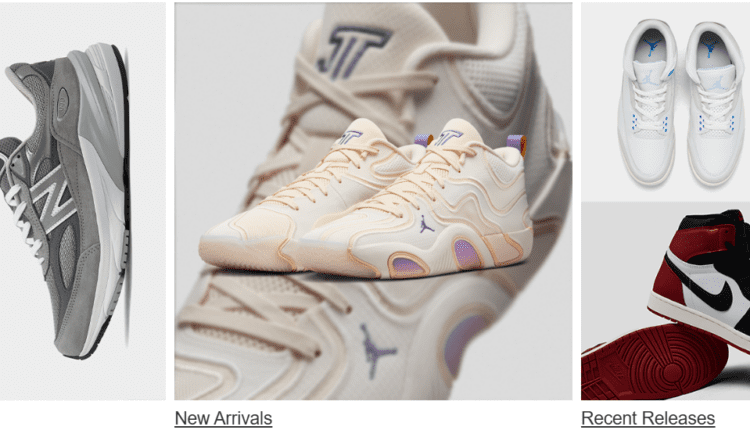Behind the Brand: The Story of Finish Line and Its Impact on Sports Retail
Introduction
In the world of sports retail, few brands have made as significant an impact as Finish Line. From its humble beginnings to becoming one of the leading athletic retailers in the United States, Finish Line has carved a niche in the industry through innovation, customer service, and a commitment to quality. This article explores the history, growth, and influence of Finish Line in the sports retail market.
The Founding of Finish Line
Finish Line was founded in 1976 by Alan Cohen and David Klapper in Indianapolis, Indiana. Initially, it was a franchise of The Athlete’s Foot, a chain specializing in athletic footwear. However, the partners soon realized the potential of having their own brand, leading to the establishment of Finish Line in 1981.
The company started with a single store but had a clear vision—to provide high-quality athletic footwear, apparel, and accessories while delivering exceptional customer service. This strategy laid the foundation for what would become a retail powerhouse in the sports industry.
Growth and Expansion
Throughout the 1980s and 1990s, Finish Line expanded rapidly, capitalizing on the growing demand for sportswear and sneakers. The company differentiated itself by offering an extensive selection of products from major brands like Nike, Adidas, and Reebok. By the early 2000s, Finish Line had grown to over 500 stores across the United States.
The retailer’s success was driven by several factors:
- Strategic Store Locations: Finish Line established stores in shopping malls and high-traffic areas to attract customers.
- Partnerships with Top Brands: By collaborating with leading athletic brands, Finish Line ensured that its stores carried the latest and most popular products.
- Customer-Centric Approach: The company focused on providing an engaging in-store experience and knowledgeable staff to help customers make informed purchases.
The Digital Transformation
As e-commerce started reshaping the retail industry, Finish Line embraced digital transformation to stay competitive. The company launched its official website in the late 1990s, gradually enhancing its online shopping experience. By the 2010s, Finish Line had developed a robust e-commerce platform, offering seamless online and in-store integration.
Some key digital strategies included:
- Omnichannel Retailing: Customers could browse products online, purchase them, and pick them up in-store.
- Personalized Shopping Experiences: Data analytics were used to understand customer preferences and offer tailored recommendations.
- Social Media Engagement: Finish Line leveraged social media platforms to connect with younger audiences and promote new product releases.
Challenges and Competition
Despite its success, Finish Line faced challenges from rising competition in the sports retail sector. Brands like Foot Locker, Champs Sports, and newer online competitors such as StockX and GOAT changed the retail landscape. Additionally, direct-to-consumer strategies adopted by brands like Nike and Adidas reduced the reliance on third-party retailers.
In response, Finish Line focused on enhancing its exclusive product offerings and strengthening customer loyalty programs. It also invested in updating its physical stores to create a more interactive shopping experience.
Merger with JD Sports
In 2018, Finish Line was acquired by JD Sports, a UK-based sports-fashion retailer, for approximately $558 million. This merger marked a significant turning point, as JD Sports aimed to expand its presence in the U.S. market through Finish Line’s established footprint.
Under JD Sports, Finish Line continued to operate as a leading retailer while benefiting from the resources and global reach of its parent company. The merger also introduced new collaborations and exclusive product lines, reinforcing Finish Line’s competitive edge.
Finish Line’s Impact on Sports Retail
Finish Line’s influence on the sports retail industry is undeniable. The company has played a crucial role in shaping consumer trends, supporting athletes, and promoting sneaker culture. Here are some ways in which Finish Line has left a lasting impact:
- Sneaker Culture and Hype Releases: Finish Line has been instrumental in fueling sneaker culture by offering limited-edition releases and collaborations with top brands.
- Support for Athletes and Communities: The company has sponsored numerous athletic events and partnered with organizations to support youth sports initiatives.
- Innovative Retail Strategies: From immersive store experiences to cutting-edge digital platforms, Finish Line has continuously adapted to evolving consumer preferences.
The Future of Finish Line
As the retail industry continues to evolve, Finish Line remains committed to innovation and growth. With the backing of JD Sports, the brand is expected to further expand its online presence, enhance its product offerings, and explore new markets.
Key future trends for Finish Line include:
- Sustainability Initiatives: Emphasizing eco-friendly products and reducing environmental impact.
- Tech-Driven Shopping Experiences: Incorporating augmented reality (AR) and artificial intelligence (AI) to enhance customer interactions.
- Global Expansion: Exploring opportunities to bring the Finish Line brand to new regions beyond the U.S.
Conclusion
Finish Line’s journey from a small sneaker store to a major player in sports retail is a testament to its resilience, innovation, and customer-first approach. By staying ahead of market trends and continuously evolving, Finish Line has not only shaped the sports retail industry but also influenced sneaker culture and consumer behavior. As the brand looks to the future, it is poised to remain a dominant force in the industry for years to come.

